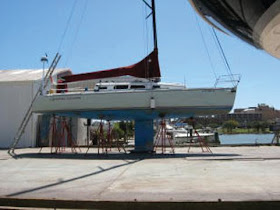 Excerpt from U.S. Coast Guard Proceedings of the Marine Safety & Security Council magazine by Ms. Judy Darby, Program Coordinator, U.S. Coast Guard Auxiliary, District Eight.
Excerpt from U.S. Coast Guard Proceedings of the Marine Safety & Security Council magazine by Ms. Judy Darby, Program Coordinator, U.S. Coast Guard Auxiliary, District Eight.The area of District Eight encompasses the New Orleans metropolitan area north to the Red River and west to Lafayette, La. Within this area, there are thousands of acres of sparsely populated marshland and swamp near the cities of Baton Rouge, Port Fouchon, Lafayette, Morgan City, and New Iberia.
Citizen’s Action Network (CAN) USCG Auxiliarists worked to launch a small committee of citizens who volunteer to help the U.S. Coast Guard save lives and property, report oil spills, and protect wildlife, in an effort to improve area maritime security.
The committee focused its early recruiting efforts on auxiliarists who live, work, and recreate on the water, and on large entities with permanent water presence and an interest in adding another layer of security. These partners include:
The Greater New Orleans Expressway Commission—which manages the Lake Pontchartrain Causeway, a double span that stretches 24 miles entirely over open water from Jefferson Parish to St. Tammany Parish in the New Orleans metropolitan area.
NASA/Michoud Assembly Facility—located on an 800-acre tract in East New Orleans, the facility has direct access to the Intracoastal Waterway.
The Lake Pontchartrain Basin Foundation—This non-profit foundation had partnered with the Coast Guard in environmental efforts.
Recruitment Efforts
Recreational boaters, fishermen, and waterfront homeowners were reached through vendors who display tri-fold Citizen’s Action Network information brochures and application forms at checkout counters.
Anyone interested in joining can now fill out the form online and send it directly to the local CAN coordinator, who verifies that the applicant contact information is correct and vets the applicant for program participation.
Stay tuned for Part 2.
Full article is available at http://www.uscg.mil/proceedings/fall2010.
Subscribe online at http://www.uscg.mil/proceedings/subscribe.asp.



